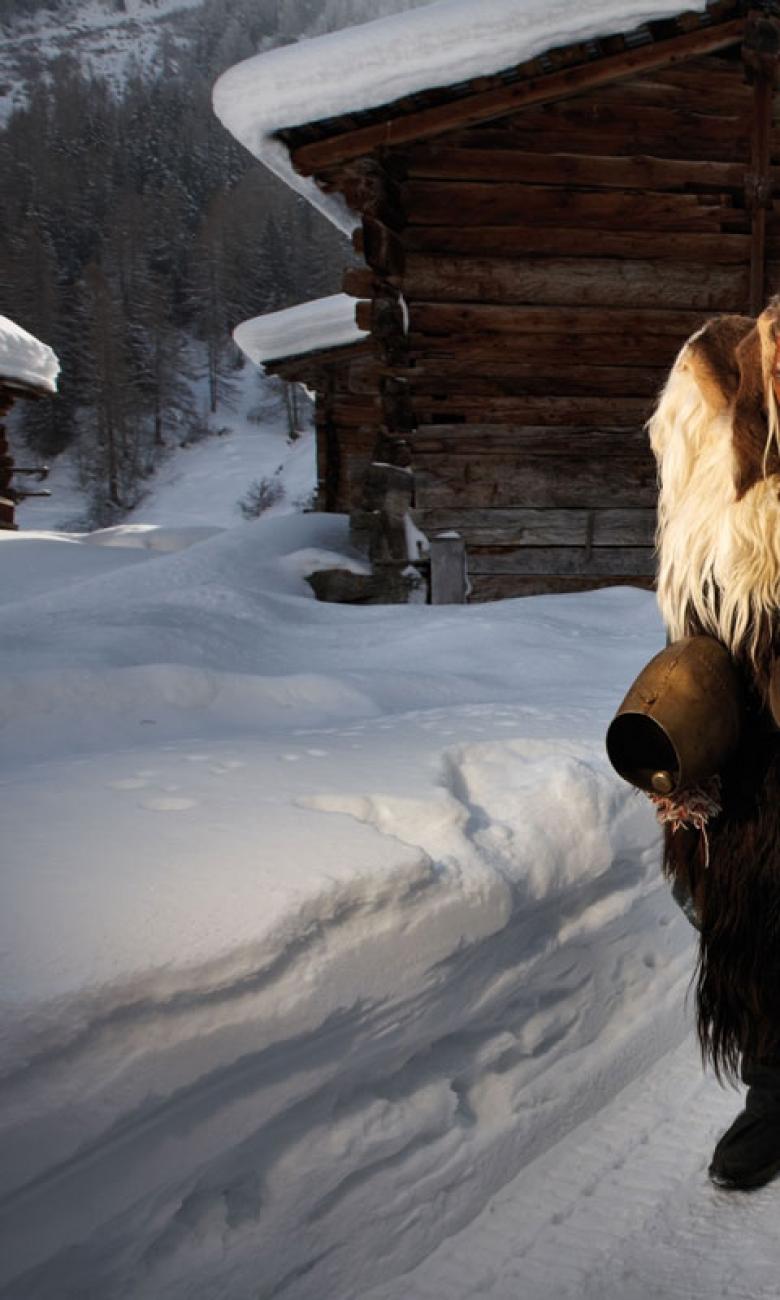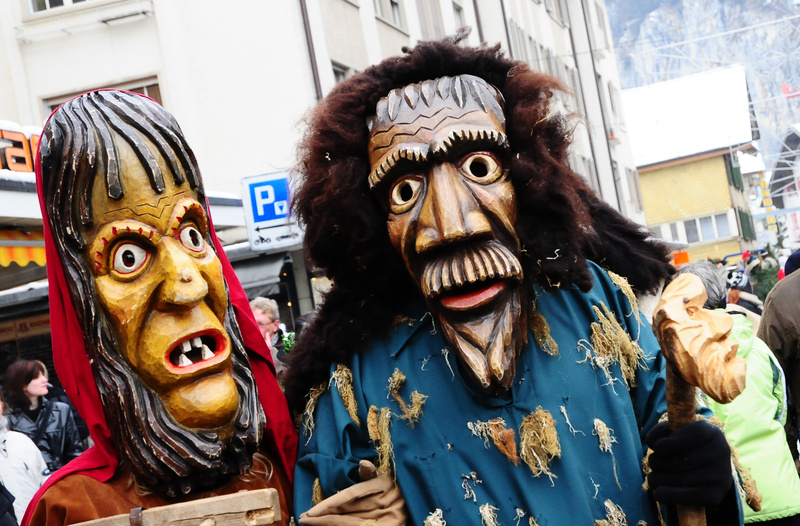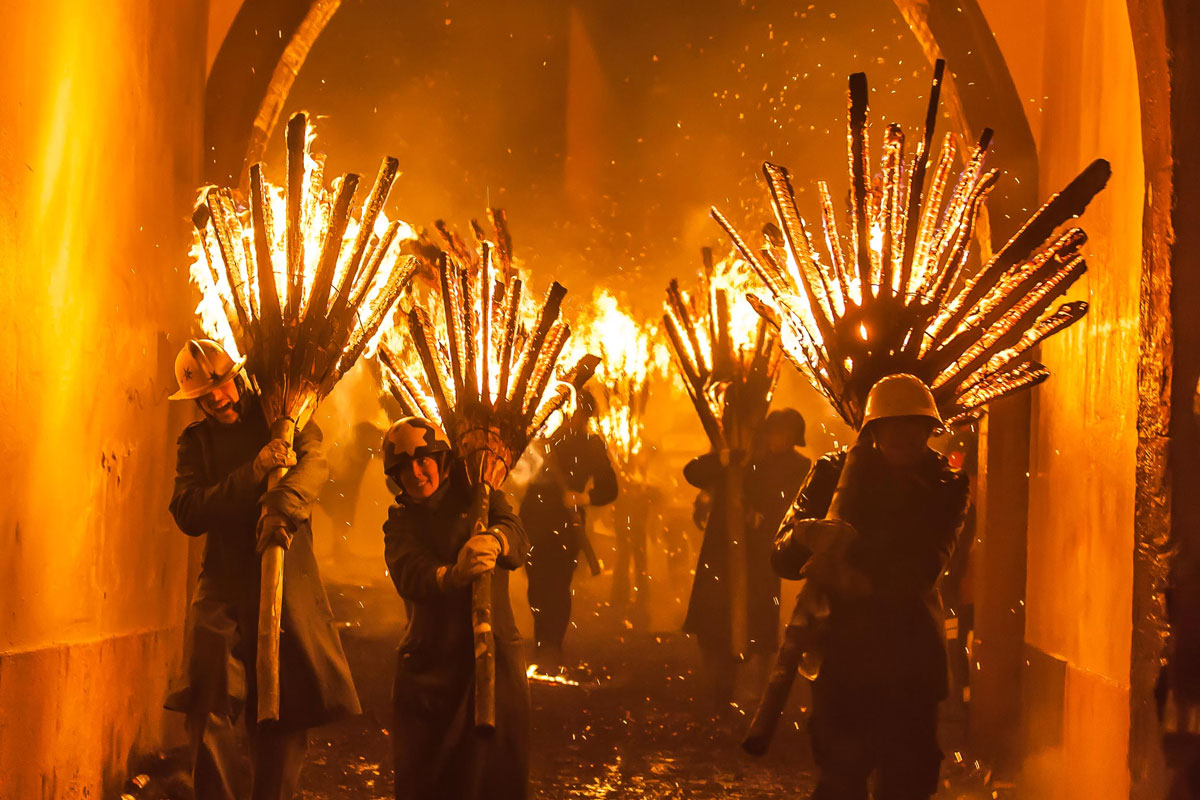5 winter traditions you won’t find outside of Switzerland
Onlookers might call these happenings a nightmarish freak show. But for the Swiss, they are a normal part of winter: living traditions that have barely changed for generations.
Even in a country as small as Switzerland, each region or village has their own customs to deal with the harshness of winter. The recurring nature of these traditions was (and still is) an important factor for the populations of the Alps in structuring their lives. Rooted in social issues of times past, religious beliefs or historic events, winter traditions serve as an orientation aid amid the unpredictability of nature. What most of them have in common is to drive out the ghosts of winter and welcome in the spring.
Tschäggättä in Lötschental
From the day after Candlemas to midnight before Ash Wednesday
Deep in the Valais lies a valley that was cut off from civilization until the 20th century. Tschäggättä combines myths and legends from a time when chasing away winter meant survival for the mountain people of the Lötschental. Traditionally, from the day after Candlemas to midnight before Ash Wednesday, unmarried men would strap on freaky masks carved out of local pine, as well as sheep or goat hides and cow bells.
Anyone in the way of the Tschäggättä will be pursued and their faces rubbed with snow. Some of these carnival masks smile eerily; others are simply grotesque, flashing real animal teeth. The tradition has evolved since the 1950's, with married men now also taking part. And for a few decades now, the tradition has been promoted by tourism boards to attract out-of-town visitors. There is even a museum about it!

Harder Potschete in Interlaken
January 2

One of the first events in the New Year is Harder Potschete, a tradition rooted in Interlaken’s past when it used to be ruled by a monastery. The custom started with young men demanding a new year’s offering of bread, wine and money from their monk rulers.
Over time, January 2 transformed into a day of reckoning between the opposing towns of Interlaken and Unterseen. Until about 60 years ago, masked boys would take to fist fighting in the streets to settle these old scores.
The purpose of today’s Pots is to drive away the spirits of the year passed and welcome in the new. Despite their terrifying looks featuring hand carved wooden masks, their loud demeanour, and chasing the occasional spectator, the Pots have a magical draw which is not to be missed.
Chalandamarz in Graubünden
March 1
The most well-known winter tradition of Graubünden has got to be Chalandamarz, a Romansh custom that takes place on March 1. The timing lines up with the New Year in the early Roman calendar, and the tradition dates back to times when the region was occupied by the Roman empire.
These deep historic roots might be part of the reason why Chalandamarz has survived through the ages. The aim is to drive away evil spirits by ringing bells – the louder the noise, the quicker winter is supposed to vanish and spring to appear. Dressed in traditional farmer outfits, school children parade around the town’s fountain first thing in the morning. From there, they visit the locals’ houses where they sing traditional songs in return for goodies.
The details of the day’s events are particular for each region. In Zuoz and Samedan, for instance, the festival is exclusively for boys – as has traditionally been the case. In Ftan, Chalandamarz is akin to carnival, and in Poschiavo, winter is symbolically burned in the figure of a snowman.
Pschuurimittwucha in Splügen
Ash Wednesday

This event is part of the carnival culture of Splügen in Graubünden. It takes place on Ash Wednesday, when the so-called Pschuuris parade through town on the lookout for young unmarried women and kids. Their targets know that if caught, their faces will be smeared with coal and grease. Back in the day, escape routes were planned and it was actually considered an honour to have got away without a ‘blackening’.
Despite a changing world, the tradition has remained intact. While researching this custom, I found out that the morning of Pschuurimittwucha belongs to the kids who go around town to collect sweets, declaring "Ds Eischi oder das Maidschi" (meaning "the egg or the girl" in Swiss German). This might just be the origin of Halloween!
Chienbäse in Liestal
First Sunday of Lent

Fire is an elementary ingredient in many rites and passages, including in the town of Liestal. Once a year on the first Sunday of Lent, handmade pinewood torches are lit on fire in a spectacular way. As you may have guessed, the name for these torches in the local dialect is Chienbäse.
The festivities start with a parade of carnival bands carrying painted lanterns. Then, at 7.15 pm sharp, the torches and twenty wooden carts are lit at Burgstrasse, from where the procession snakes through the old town. Pitch dark outside, the symbolic introduction of light is an end-of-winter tradition that resonates deeply. Since the Chienbäse festival has been commissioned by the Liestal town council, it is said to have become quite touristy.




